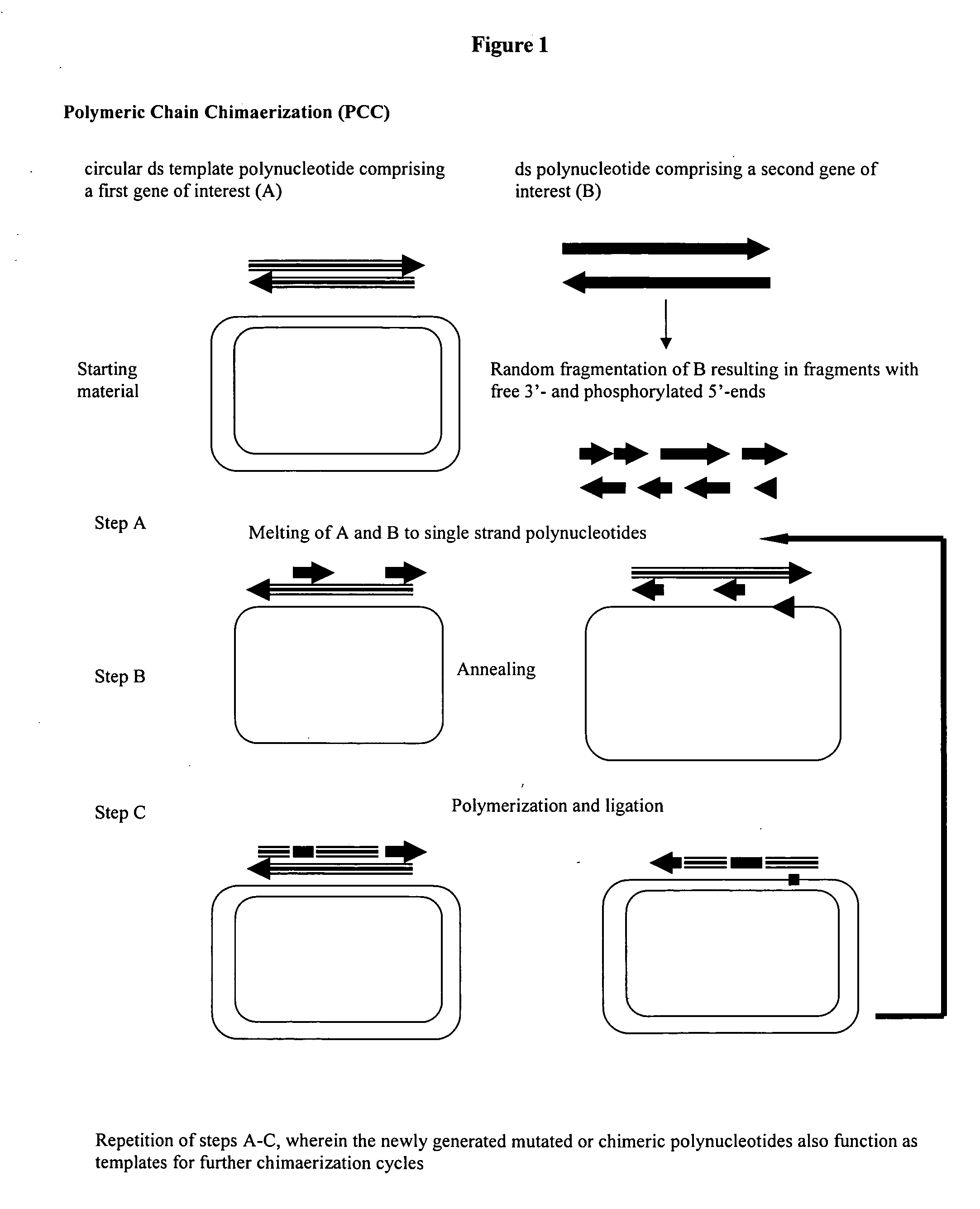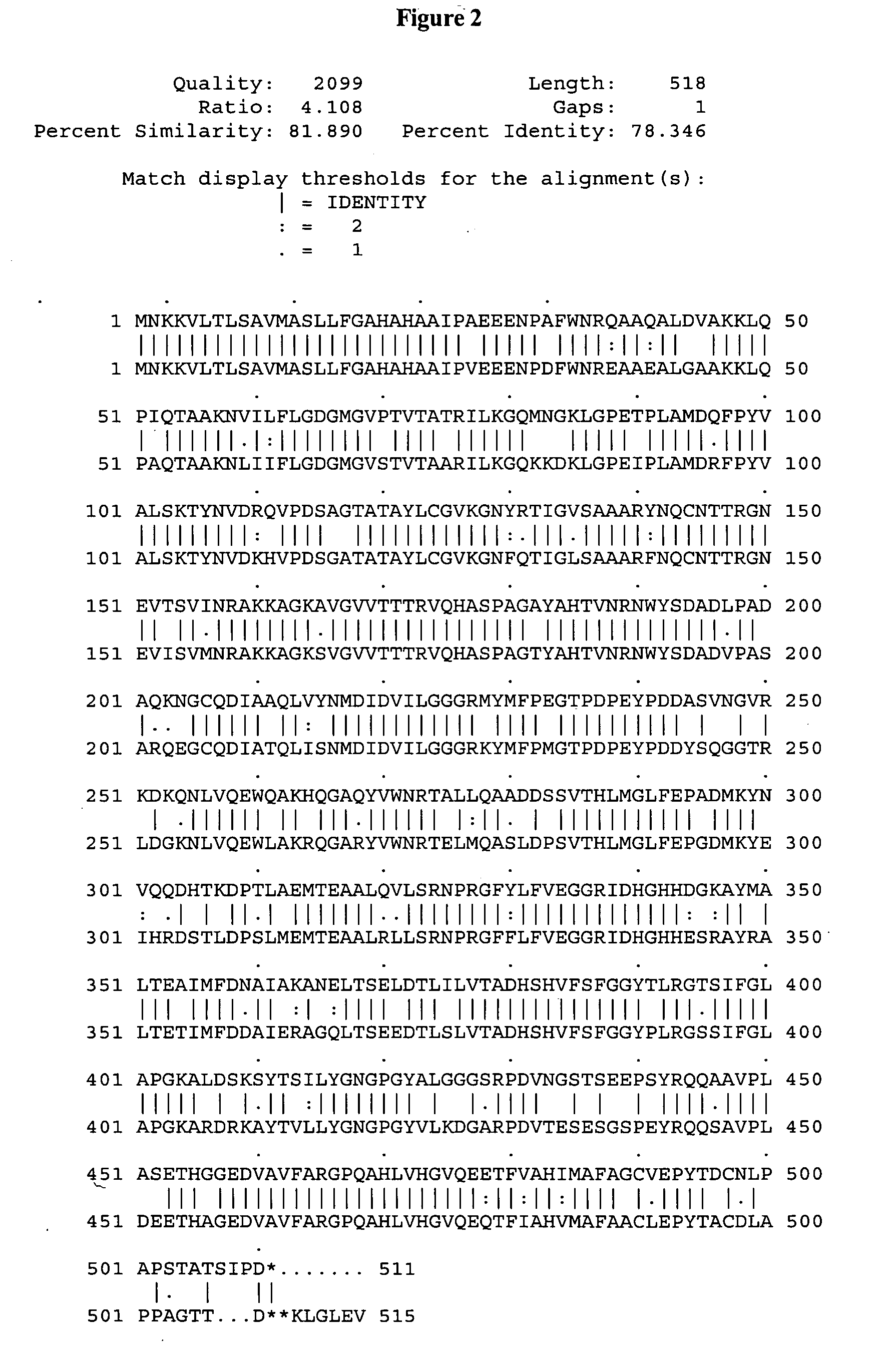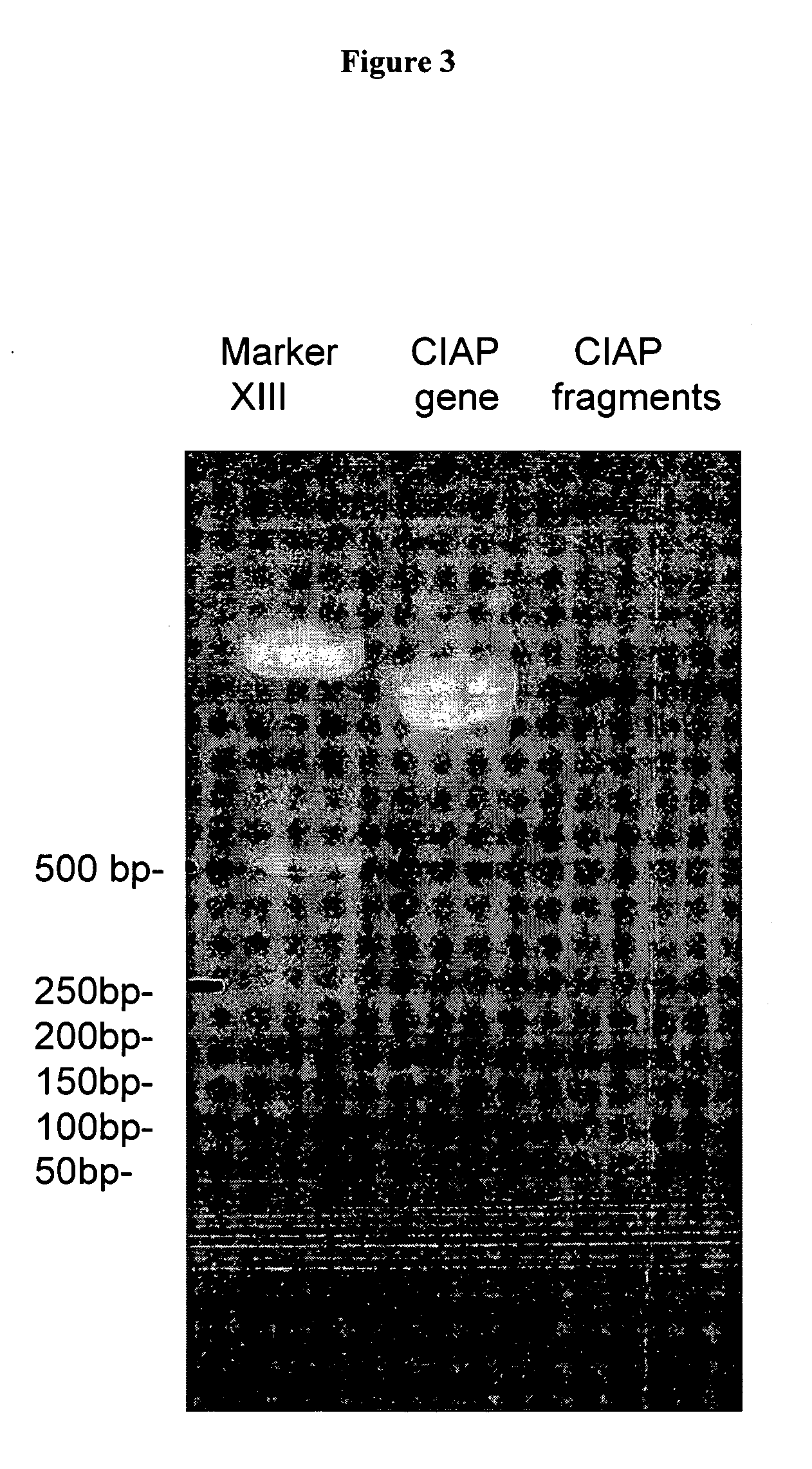Method for obtaining circular mutated or chimeric polynucleotides
- Summary
- Abstract
- Description
- Claims
- Application Information
AI Technical Summary
Benefits of technology
Problems solved by technology
Method used
Image
Examples
example 1
Chimerization of Human Placental Alkaline Phosphatase (hpAP) with Calf Intestinal Alkaline Phosphatase (ciAP)
[0071] The genes of ciAP and hpAP exhibit a homology of about 80% to each other (see SEQ ID NO's 1 and 3, respectively, in FIGS. 5 and 6). Both the amino acid sequences are shown in FIG. 2 and in SEQ ID NO's 2 and 4, repectively. The distribution of homologous and heterologous areas is nearly random over the whole gene, making it easy to monitor the degree of chimerization of both the genes.
[0072] The two genes were cloned into the plasmid pkk 177 with an ampicillin resistance gene where they were under the control of a pmgl promoter (see patent application WO 88 / 09373) and transformed into the E.coli strain XL-blue-MRF'.
[0073] For the following experiment hpAP was used as a first gene of interest.
[0074] The random fragments of the target gene were generated from the ciAP gene.
[0075] The E.coli strain carrying the plasmid with the hpAP gene was ...
example 2
Transformation
[0095] Transformation was done by electroporation of both samples PCC and neg. control respectively into the E.coli XL-MRF' strain (Stratagene Cat. No. 200158). Afterwards 100 μl of the PCC-preparation and 1 ml of the neg. control were plated out on an LB agar plate containing 100 μg / ml ampicillin. Cells were incubated over night at 37° C.
[0096] The results of this transformation experiment in terms of the number of growing clones are given in the following Table:
Neg. control-samplePCC-sampleClones0640
[0097] 20 clones where randomly picked from the PCC-sample plate and separately inoculated in LB-amp medium overnight at 37° C. The plasmids of the 20 samples were isolated using a Roche High Pure Plasmid Isolation Kit Id. 1754777 and sequenced using an ABI Prism Dye Terminator Sequencing Kit and ABI 3 / 73 and 3 / 77 sequencer (Amersham Pharmacia Biotech). The sequencing primers used were all based on the ciAP gene (see SEQ ID NO's 5, 7, 8, and 9, respectively, in FIG. 7...
example 3
Testing Clones for AP Activity
[0098] The AP activity was determined as follows: 90 μl cell suspension of the overnight culture was mixed with 10 μl of B-PER (Bacterial Protein Extraction Reagent, Pierce Cat. No. 78248) to disrupt the cells. 50 μl of this mixture were added to 90 μl reagent (Roche Cat. No. 2173107). Active AP releases p-nitrophenol which can be monitored by a photometer at 405 nm. An E. coli XL-MRF' strain cell suspension without hpAP or ciAP-plasmid was used as a neg. control.
PUM
| Property | Measurement | Unit |
|---|---|---|
| thermostable | aaaaa | aaaaa |
| frequency | aaaaa | aaaaa |
| length | aaaaa | aaaaa |
Abstract
Description
Claims
Application Information
 Login to View More
Login to View More - R&D
- Intellectual Property
- Life Sciences
- Materials
- Tech Scout
- Unparalleled Data Quality
- Higher Quality Content
- 60% Fewer Hallucinations
Browse by: Latest US Patents, China's latest patents, Technical Efficacy Thesaurus, Application Domain, Technology Topic, Popular Technical Reports.
© 2025 PatSnap. All rights reserved.Legal|Privacy policy|Modern Slavery Act Transparency Statement|Sitemap|About US| Contact US: help@patsnap.com



